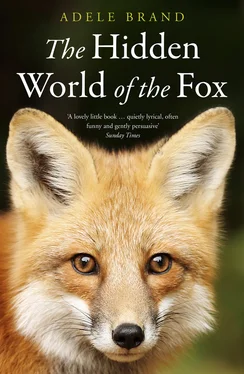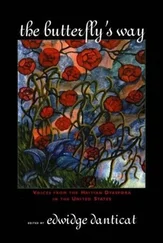So, instead, we have put the fox in the dock for questioning. We have accused it of trespassing into the human domain, of being cheeky, of spreading disease, harming pets, and even posing a significant risk to ourselves. Unperturbed, the fox strays ever further into our world, permeating our language, pop music, movies, pub names and television adverts. They are debated in offices, schools and Parliament. One was recently filmed by bemused journalists outside 10 Downing Street as they awaited the appearance of the prime minister. Another found fame climbing 72 floors of the Shard, and lives on in that monolith’s merchandise. Others have trotted onto the pitch in the middle of high-profile football matches.
Bizarrely, even our real courtrooms are not immune. Temping as a court officer to staunch debts after my graduation, I was surprised to hear the defendant in my very first criminal trial claim an alibi of being busy feeding a ‘baby’ fox. She was still found guilty; it is beyond the court’s powers to summon foxes as witnesses.
Foxes have filled my life, too; it has become a running joke among friends that wherever I go – from the Indian desert to the Yucatan rainforest – I am bound to meet one, usually sitting, as they do, watching me from a distance. They dominated my wildlife diaries as a child, were part of my academic studies in ecology, and have always been the most popular stars for the millions of visitors dropping by my corner of the internet. I have fostered orphaned cubs and injured adults for the Fox Project charity, and been privileged to observe and film some extraordinary fox behaviour in the wild. Mostly, however, I wish to know them as individuals, to learn the stories of their lives as honest biographer – and to be a mediator, hoping to keep the peace between human and fox.
Through that, I have crossed the trail of two foxes: the wild one which fills my spreadsheets with scientific data, and its non-identical twin that dwells in the human imagination. Twenty years of observing, photographing, and occasionally rescuing foxes have impressed on me just how very complex a neighbour we have in this small, curious member of the dog family. But the human response to wildlife can be just as nuanced. I’ve seen the extremes of it: the fear, the hate, the passion and kindness.
This matters. The world is now mostly humanised. There may be valleys in Tasmania which have never been explored, and tundra lakes in the great Canadian north that are lonely save for mosquitoes and caribou, but for many wild animals eking a living while you are reading these words, wilderness is irrelevant. They’re living on land that is controlled by humanity. From forests heavily managed for commercial timber to grasslands seeded with exotic crops and split by dangerous roads, many creatures must compensate daily for anthropogenic changes to landscapes that they occupied long before palaeontologists revealed the existence of deep time.
Yet this overlap zone, where civilisation and wilderness meet, is not devoid of biodiversity. With tolerance, respect or sometimes by simply ignoring, nature can thrive in the human shadow. Urban wildlife is here to stay, and not only in London. Leopards share the exotic bustle of Mumbai with twelve million people. Spotted hyenas scavenge rubbish in major African cities. Vancouver occasionally debates the pumas that stalk mule deer in suburban gardens. And foxes, no less controversial than the great carnivorans, have adapted to the new biome called ‘city’ from Aberdeen to Zurich, from the bitter winters of western Canadian metropolises to the scorching desert towns of Israel.
Sharing the same geographical space as wildlife brings out instincts in people that were more proportionate in days when we had to fend off sabre-tooth cats. In a world full of modern dangers, we are haunted by the idea of a primeval fate. The results of that fear can be ugly. I’ve watched Canadian police officers kill bears that were harming no one because, well, they just couldn’t be sure what tomorrow might bring. False widow spiders, coyotes, wolves, raccoons, foxes – they’ve all had their headlines.
But as night falls in my 1,300-year-old Surrey village, the other side of the equation swings into life. All down these streets are householders who will smile at a fox trotting across their lawn tonight. Fear may have grown as we have become ever more disconnected from nature, but so has a desire to rekindle that relationship. The small glimpse of a wild fox – and, it has to be said, the controversial practice of deliberately feeding them – brings a lot of happiness to many.
MY AIM WITH THIS BOOK is to explore how the red fox, a wild animal that evolved in the wildwood, has adapted with such dramatic success to modern Britain. This involves understanding the real fox as researched by cutting-edge science, and considering its behaviour, physical form and intelligence in the context of the world that it inhabited for thousands of centuries before finding us.
This is not a book about fox hunting. That argument has consumed multitudes of space elsewhere. Once the real creature displaces the mythological fox of hunters’ lore, and a vague sense that ‘populations must be controlled’ is replaced with scientific knowledge, the question of whether arbitrary cruelty is acceptable rather answers itself.
To a small extent, this is also a book about people: how we form our opinions of nature, and why honest observations can sometimes be misleading. To clarify, I am not anti-human. Environmentalists who are, doom themselves to an eternity of digging tunnels for Swampy and being ignored by decision-makers. Education is more effective than alienating the public with abrasive name-calling – a lesson some animal rights activists would do well to remember. Assuming that everyone who is concerned about foxes sharing their garden must be a paid-up member of the Countryside Alliance is about as realistic as Aesop’s fox dismissing the sour grapes.
This great British public, these people whose world overlaps that of foxes – they are binmen, bankers, the bankrupt, golfers, mothers caught in traffic on the school run, even criminals.
This is you, England.
You are beautiful, heart-breaking, eccentric and implausible.
You are the people who foxes tolerate as neighbours.
The question is now, will you tolerate them?

2
A Brief History of the Fox
WE ARE REDESIGNING THE FOX: its diet, territory size, social interactions, and its longevity and causes of death have all been changed by us. Even their body fats are impregnated with our lifestyle, carrying residues as diverse as fire retardants and nuclear radiation. Their days are filled with human-made noises, human-made landscapes, and human-made risks.
But foxes have not spent their evolutionary history sunbathing on greenhouse roofs or evading aggressive pet cats, let alone treading on broken glass or eating leftover pizza. Wild nature has been twisted out of joint in Britain; except for the lonely saltmarshes of the north Norfolk coast, very little has not been reshaped by our fingerprints. But to understand the fox among us, we must first consider the world as it was before.
I AM FOLLOWING a wild wolf with a hind foot as wide as my hand. The paw print is written in the soft clay of a path flanked by wrinkled old trees that take circuitous routes to the sky, their branches bending under a red squirrel’s leaps, their bark festooned with furry moss. Looking past their trunks, I see more trees, and yet more: shadows of green upon green, and woodpeckers laugh from within. There is not a sound nor sight save of natural things – just tree frogs purring at dusk, and pure, sweet, forest air. Where the canopy has been opened by a giant’s fall, new saplings race to the light over the carpet of wild garlic flowers. Deer consume many such infant trees and are themselves taken by wolves; the leftover bones fall to foxes.
Читать дальше












